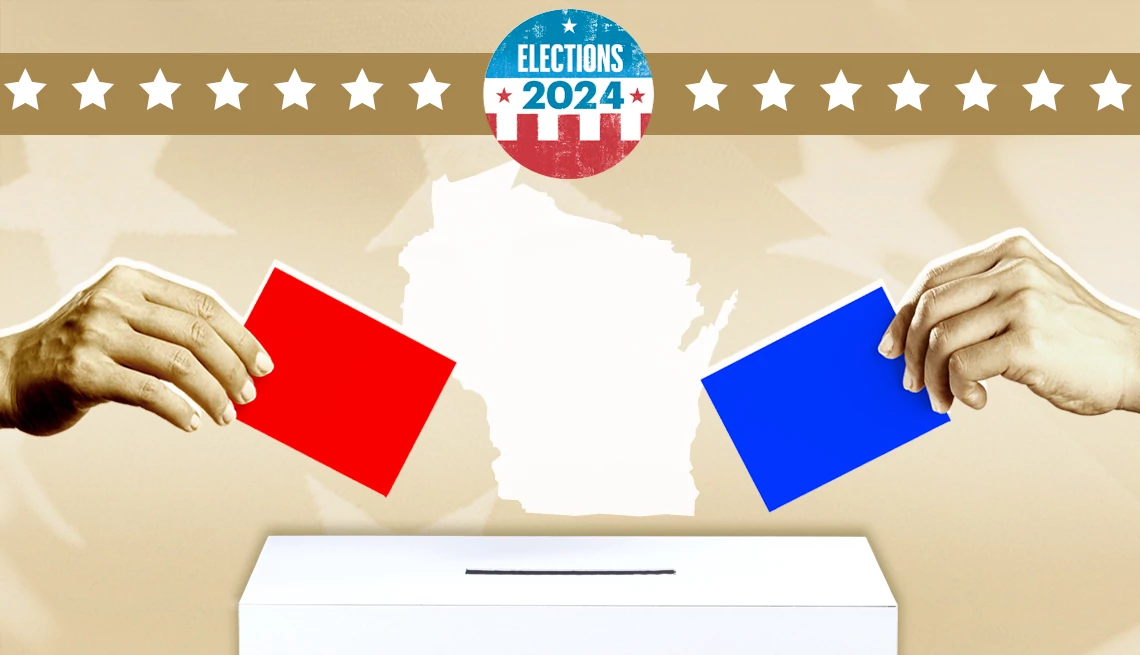AARP Hearing Center


In the presidential battleground state of Wisconsin, Democrat Kamala Harris and Republican Donald Trump are neck and neck among likely voters, with Harris up 1 percentage point, according to an exclusive AARP poll released Wednesday.
Forty-nine percent of likely voters favor Harris while 48 percent support Trump in a head-to-head matchup. When the lens shifts to voters 50-plus, former President Trump takes a 3-percentage-point lead over Vice President Harris, according to the poll. Fifty percent of older voters prefer Trump, while 47 percent favor Harris.
The latest presidential poll results, which are within the poll's margin of error of plus or minus 4 percent for likely voters and plus or minus 3.5 percent for older voters, show a shift from an AARP Wisconsin poll taken in late June and early July when voters were asked about a matchup between Democratic President Joe Biden and GOP candidate Trump. In that summer poll, Trump was 5 percentage points ahead of Biden among all voters, and he led Biden by 9 points among voters 50-plus. Harris became the Democratic presidential nominee Aug. 5 after Biden announced he was ending his reelection campaign.
The new data shows “it’s a completely different race,” says Bob Ward, a partner with Fabrizio Ward, which conducted the bipartisan AARP-commissioned survey along with Impact Research.
Pollsters interviewed 1,052 likely Wisconsin voters about candidates and top issues from Sept. 11-14, starting a day after Harris and Trump debated. Asked who won the debate, 55 percent of all voters say Harris while 23 percent choose Trump, according to the poll.


Wisconsin provides 10 electoral votes toward the 270 total needed to win the presidency. In 2020, Biden won Wisconsin with a margin of just 0.63 percentage points.
Overall, the new polling data is “in many ways more normal,” Ward says.
For example, the poll shows there is “almost lockstep unity” among Democrats behind Harris as opposed to the summer poll when younger voters showed dissatisfaction with Biden, Ward says. The poll shows 4 percent of voters say they will support a third-party candidate compared with 13 percent over the summer, Ward says.


































































More From AARP
Meet Election Poll Workers Showing Up Year After Year
Civic responsibility, social connections and even pay are prime motivatorsAARP Election Polls: How Candidates Are Faring Across the U.S.
Find exclusive data on the 2024 presidential race and issues that matterHow to Register and Vote in the 2024 General Election
State-by-state guide to everything you need to knowRecommended for You